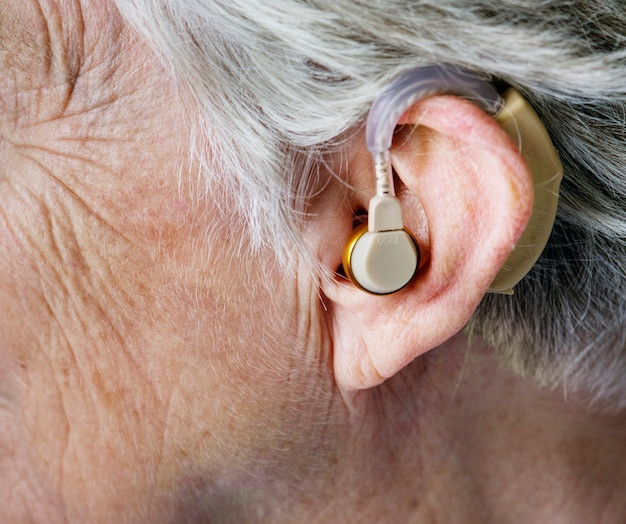Behind-The-Ear (BTE) Hearing Aids

Behind-The-Ear (BTE) hearing aids are among the most common and versatile types available. They consist of a small plastic case that rests behind the ear, connected to an earmold or earpiece inside the ear canal. BTE devices are suitable for almost all types of hearing loss, from mild to profound. Their larger size accommodates a bigger battery for longer life and can include additional features like directional microphones and Bluetooth connectivity. Despite their visibility, modern BTE aids are designed to be sleek and less noticeable.
In-The-Canal (ITC) and Completely-In-Canal (CIC) Hearing Aids
For those seeking a more discreet option, In-The-Canal (ITC) and Completely-In-Canal (CIC) hearing aids might be the right choice. These devices are custom-made to fit partially or completely within the ear canal, making them less visible than other types. While they are cosmetically appealing and less likely to pick up wind noise, their small size limits battery life and makes them more challenging to handle, especially for individuals with dexterity issues. They're best suited for adults with mild to moderate hearing loss.
Receiver-In-Canal (RIC) Hearing Aids
Receiver-In-Canal (RIC) hearing aids are similar to BTE models but feature a smaller behind-the-ear component and a wire that connects to a receiver or speaker placed in the ear canal. This design allows for a natural sound experience and reduces the feeling of a plugged ear, known as the occlusion effect. RIC aids are suitable for a wide range of hearing losses and are appreciated for their comfort and discretion. They also offer the flexibility of changing receivers to help with varying degrees of hearing loss.
In-The-Ear (ITE) Hearing Aids
In-The-Ear (ITE) hearing aids fill the outer portion of the ear and are custom-made to fit each individual's ear shape. They are more visible than ITC or CIC models but offer ease of use, with larger batteries and easier-to-manage controls. ITE aids can be equipped with advanced features such as directional microphones and wireless connectivity. Suitable for mild to severe hearing loss, they provide a good balance between functionality and cosmetic appeal, making them a popular choice among many users.
Bone Anchored Hearing Systems
Bone Anchored Hearing Systems (BAHS) are designed for individuals who cannot use traditional hearing aids due to congenital external ear canal malformation, chronic ear infections, or single-sided deafness. These devices bypass the outer and middle ear entirely, sending sound vibrations directly to the inner ear through the bone. The process involves a minor surgical procedure to implant a small device onto the skull. BAHS are highly effective for specific types of hearing loss and have been a game-changer for many who are unable to benefit from conventional hearing aids.
Digital vs. Analog Hearing Aids
When choosing a hearing aid, one fundamental decision is whether to go for a digital or analog model. Analog hearing aids amplify all sounds the same way, which can be less effective in noisy environments. Digital aids, on the other hand, convert sound waves into digital signals, allowing for more complex processing and customization to the user's hearing loss profile. They can automatically adjust to different listening environments, making them more versatile and providing a clearer, more natural sound quality. Most modern hearing aids are digital due to their superior performance.











Comments
0 comment